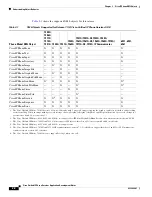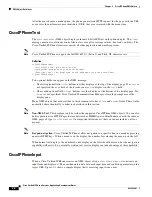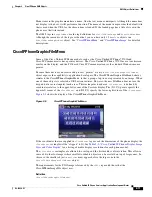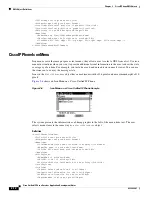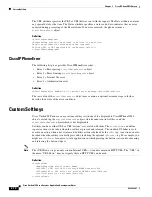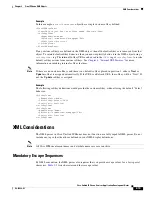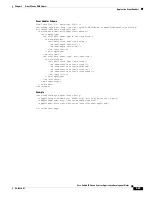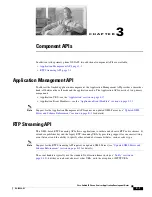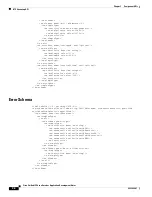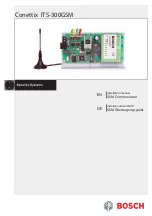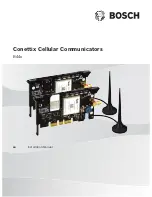
2-15
Cisco Unified IP Phone Services Application Development Notes
OL-18696-01
Chapter 2 CiscoIPPhone XML Objects
XML Object Definitions
The Application Status window contains three main areas: (see
Figure 2-9
):
•
Text Area
•
Timer Area
•
Image Area
Figure 2-9
Elements of Application Status Window
Note
Self-terminating XML elements, non-declared or missing elements, and elements with the default values
are all considered non-configured elements.
To allow dynamic sizing, do not configure the Text and Timer areas with any value other than the default
used by the XML parser. If both elements are not configured, you can proceed, but must follow these
rules:
•
Do not display the Text Area and Timer Area sections of the Application Status window.
•
If the LocationX element is not configured or is set to centered, and the image provided is less than
the maximum width allowed, the Image Area can be resized.
•
If the image provided is smaller than the minimum width, the minimum allowed window width
should be used.
•
If the width of the image provided is between the minimum and maximum sizes of the window, the
window should be sized to display the image as well as the standard surrounding borders.
•
The image height should never change.
See
Table 2-3
for an overview of the maximum and minimum image area sizes by phone model. Most
phone models support all sizes between the minimum and maximum. An exception is allowed for the
Cisco Unified IP Phones 7940G/7960G due to resource constraints. For these phones, you should
implement both the maximum size and minimum size windows ignoring all of the intermediate sizes.
Table 2-3
Application Status Window Allowable Image Sizes
Phone Models
Maximum Image
Area Width
Minimum Image
Area Width
Maximum Image
Area Height
7940G, 7960G
106
21
21
7941G/7941G-GE, 7942G, 7945G, 7961G/7961G-GE,
7962G, 7965G
252
50
50
7970G/7971G-GE, 7975G, IP Communicator
262
50
50


